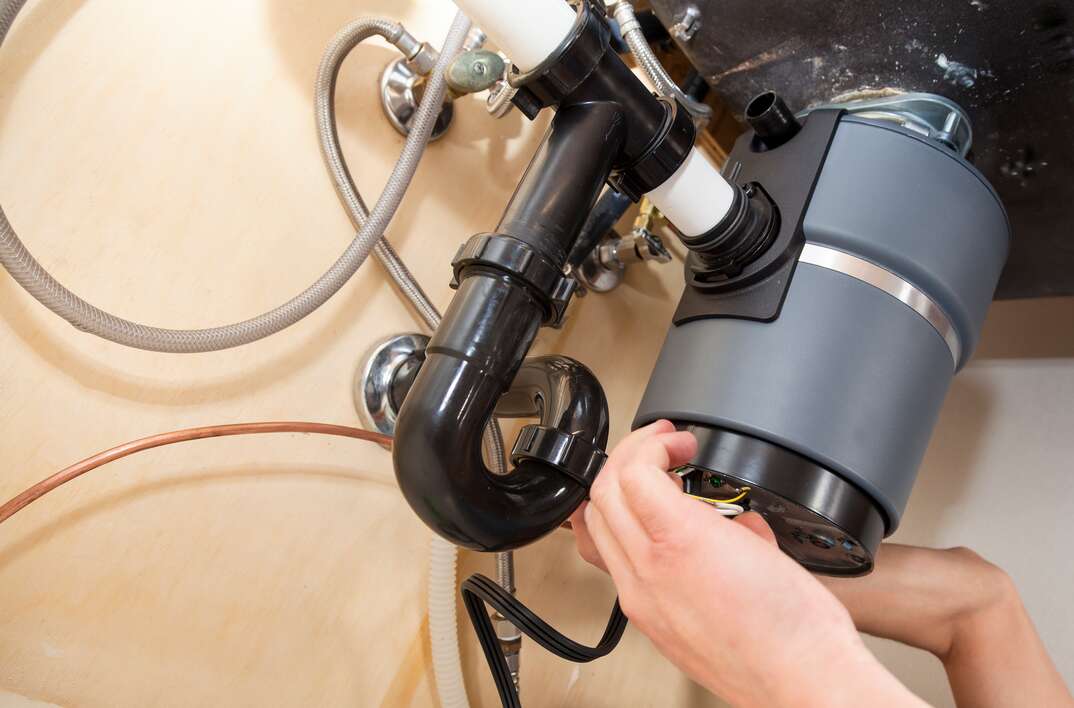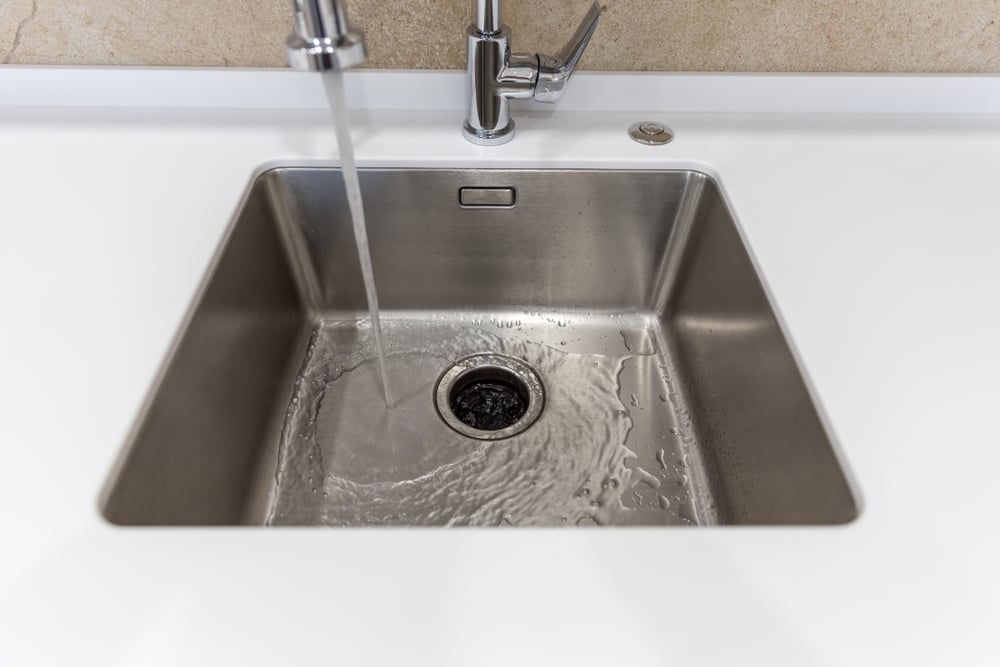Step-by-Step Techniques for Repairing a Leaky Garbage Disposal
Step-by-Step Techniques for Repairing a Leaky Garbage Disposal
Blog Article
What are your thoughts about How to fix a pretty consistent leak from my garbage disposal?

Waste disposal unit are essential kitchen appliances that help in getting rid of food waste successfully. Nonetheless, a dripping garbage disposal can be a frustrating and unpleasant issue to deal with. Fortunately, several leaks can be fixed quickly with a few straightforward steps. In this article, we will certainly talk about how to take care of a dripping garbage disposal properly.
Introduction
Garbage disposals are set up under cooking area sinks and are developed to shred food waste into smaller pieces, permitting it to pass through the plumbing system conveniently. While these tools are generally reliable, leaks can occur with time because of damage, loosened connections, or damage to the system.
Typical Causes of Leaks in Trash Disposals
Worn Seals and Gaskets
Seals and gaskets play a crucial function in avoiding water from leaking out of the garbage disposal. Gradually, these elements can degrade, resulting in leaks around the disposal device.
Loose Links
The links between the garbage disposal and the pipes system can come to be loosened gradually, causing water to leak out during operation.
Fractures or Openings in the Disposal System
Physical damage to the garbage disposal, such as fractures or holes in the real estate, can additionally lead to leaks.
Determining the Resource of the Leak
Prior to trying to deal with a leaking garbage disposal, it is important to determine the source of the leak. This can generally be done via visual evaluation or by performing basic tests.
Visual Evaluation
Examine the waste disposal unit device meticulously for any kind of indicators of water leakage. Pay close attention to areas around seals, gaskets, and link points.
Testing for Leakages
One way to check for leaks is by running water with the disposal unit and checking for any kind of visible indicators of leak.
Devices and Products Needed for Dealing With a Dripping Waste Disposal Unit
Before starting the repair process, collect the necessary devices and products, consisting of a screwdriver, flexible wrench, plumbing professional's putty, substitute seals or gaskets, and epoxy or patching product for fixing fractures or holes.
Step-by-Step Overview to Dealing With a Leaking Garbage Disposal
Turn Off the Power
Prior to attempting any fixings, guarantee that the power to the garbage disposal system is shut off to stop the danger of electric shock.
Situate the Leak
Recognize the exact area of the leakage and determine the cause.
Tighten Connections
Make use of a wrench to tighten any type of loose connections in between the disposal unit and the plumbing system.
Replace Seals or Gaskets
If the leakage is due to worn seals or gaskets, eliminate the old elements and replace them with new ones.
Patching Cracks or Openings
For fractures or openings in the disposal unit, use epoxy or an ideal patching product to seal the damaged location.
Examining the Waste Disposal Unit After Repair Service
When the repair work is complete, examine the waste disposal unit by running water through it to ensure that the leakage has been dealt with.
Preventive Upkeep Tips to Prevent Future Leaks
To stop future leaks, it is important to execute normal upkeep on your garbage disposal. This consists of keeping it clean, avoiding putting non-food things or hard items down the disposal, and periodically checking for leakages or other issues.
Verdict
Finally, repairing a dripping garbage disposal is a reasonably uncomplicated procedure that can be completed with fundamental devices and products. By following the steps described in this article and exercising preventive upkeep, you can maintain your garbage disposal in good working problem and stay clear of costly repair work in the future.
What to Do About a Leaking Garbage Disposal
A leaking garbage disposal often goes unnoticed until you confront a sopping cabinet, a foul-smelling puddle, or an audible drip-drip-drip from the unit. The fix can be frustrating, too, because the leak can stem from a number of components in the system. Fortunately, with a little sleuthing, you can zero in on the leak and—depending on the exact location—stop the icky oozing and repair the component that caused it. Worst case scenario, if it turns out that the garbage disposal must be replaced, installing a new one is a reasonable do-it-yourself task for those with basic plumbing skills. Read on to keep the cash you’d otherwise hand over to a pro.
Prepare to find the leak
Prior to testing the garbage disposal for leaks, unplug it at the wall outlet and turn off the power from the breaker box to prevent electrical shock. Then insert a watertight sink stopper into your sink drain and wipe the unit dry with a clean cloth. In any handy container, mix a few drops of food coloring into a few cups of water, and pour the dyed water onto the sink stopper to help you locate the leak.
Investigate the source
the top, where the disposal meets the sink drain the side, where the dishwasher hose or main drain pipe connects to the disposal or the bottom of the unit Inspect each of these locations while gliding a light-colored rag over the unit; the dyed water will readily show on the rag and reveal the location of the leak. If a leak isn’t immediately apparent, remove the sink stopper and pour a few more cups of dyed water down the sink drain, then check for leaks again. Leaks near the top of the unit are more likely to show themselves while the sink is plugged, while side and bottom leaks are more noticeable while the sink is unplugged.
The metal sink flange that sits directly inside the sink drain is typically sealed around the top with plumber’s putty (a clay-like sealant) and then secured from under the sink with bolts. If the plumber’s putty deteriorates, or the bolts loosen, the flange can no longer form a watertight seal between the sink drain and the disposal—which could cause a leak at the top of the unit.
To reseal the leaky flange, you must first detach the garbage disposal. Start by loosening the screws securing the main drain pipe to the disposal, then loosen the screws in the metal clamp securing the dishwasher hose to the disposal and detach the drain pipe and dishwasher hose from the disposal. Loosen the screws in the mounting ring that connects the disposal to the metal mounting assembly beneath the sink, then pull down the disposal and carefully set it on a clean, dry surface. Loosen the bolts in the mounting assembly with a wrench, then pull down the mounting assembly and set it near the disposal.

As a serious reader on Tips on Fixing a Leaking Garbage Disposal, I imagined sharing that excerpt was really useful. Sharing is good. Who knows, you may be helping someone out. Thanks for going through it.
Further Details Report this page